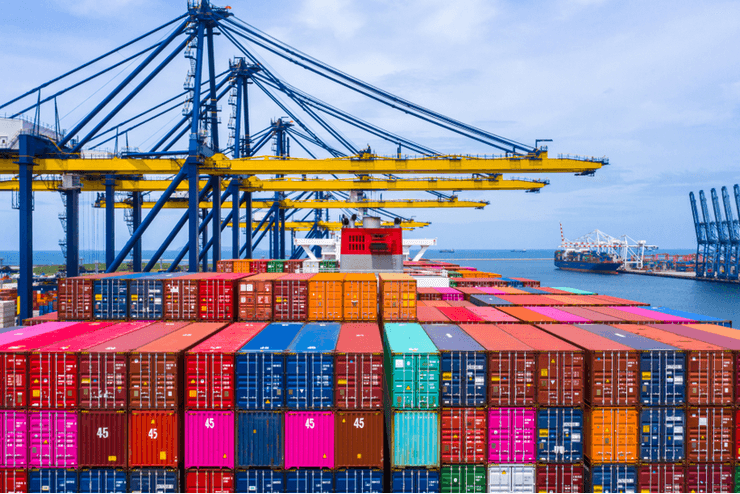
Japan’s Position in Marine Transport
Hello, I’m Ichiki of Sync Logistics.
In this issue, I’d like to share my thoughts on Japan’s place in the world in terms of marine transport.
■When did ocean container transport begin?
Since our company’s establishment, the vanning of used cars has been our strength. This type of service utilizes containers circulating around the world.
Originally, cargo handling on ships were conducted through bulk loading where individual cargo were loaded and unloaded repeatedly. However, in 1956, an entrepreneur named Malcolm McLean devised the system of loading cargo as units, with each container equivalent to one unit.
In addition to significant reductions in cost due to standardized cargo handling, security is ensured by “container seals” which are used to seal containers. Containerization has led to innovations such as reductions in cargo damage, theft, and the drastic reduction in transport time, which have greatly contributed to development of the global logistics network.
■Japan (Kobe) was once the number one port in the world.
In 1968, containerized transport for imports and exports began in Japan. Japanese port operators proactively adopted such a cargo handling method in a highly novel field, leading to a quick expansion in the volume of containers handled. Especially in the 1970s, as an export port in the Hanshin Industrial Region, the Port of Kobe became the number one port in terms of the number of containers handled.
I am proud of the people in the port industry at the time who made quick capital investment decisions and achieved results in response to revolutionary change. In response to coming technological innovations including digital transformation and market changes, I would like to get the latest information, and make decisions for the future not only within the company, but also in cooperation with people outside the company.
■”Japan’s Position” in Marine Transport
As you may know, Japan’s major ports of Tokyo, Yokohama, Osaka, Nagoya, and Hakata are currently classified as local ports by major global shipping companies. As a maritime nation in the top 10% of the world’s population with 120 million people, I want to share with you the fact that Japan is not the “most important” country in the eyes of shipping companies.
In the past 2 years, Japan’s dollar-based ocean freight rates have approximately doubled.
On the other hand, dollar-based freight rates in China and Europe are said to have increased approximately sevenfold.
Please see:https://www.sync-logi.com/blog/0006/
While maritime container freight rates increase or decrease based on the supply and demand for cargo worldwide, freight is allocated to countries that can sell at higher rates. Moreover, the lower the cargo handling costs for container ships and port entry fees, the easier it is for shipping companies to ensure profits. In this light, Japan has been classified as a country with high freight costs, and as a result, it seems to have been excluded from major shipping routes.
This may seem to be a little agonizing, but I do not see a problem with it at all.
I believe there are still many customers (exporters) in Japan who plan to expand their businesses, and if we build systems that allow young people, women, non-Japanese, and others who have supported the industry until now to be easily participate in an active way, we may have even more brisk imports and exports. More than anyone else, I believe in the growth of our company’s employees, our partners, and our customers.
I hope that reading this will prompt you to think about what you can do.
Thank you for your time.







